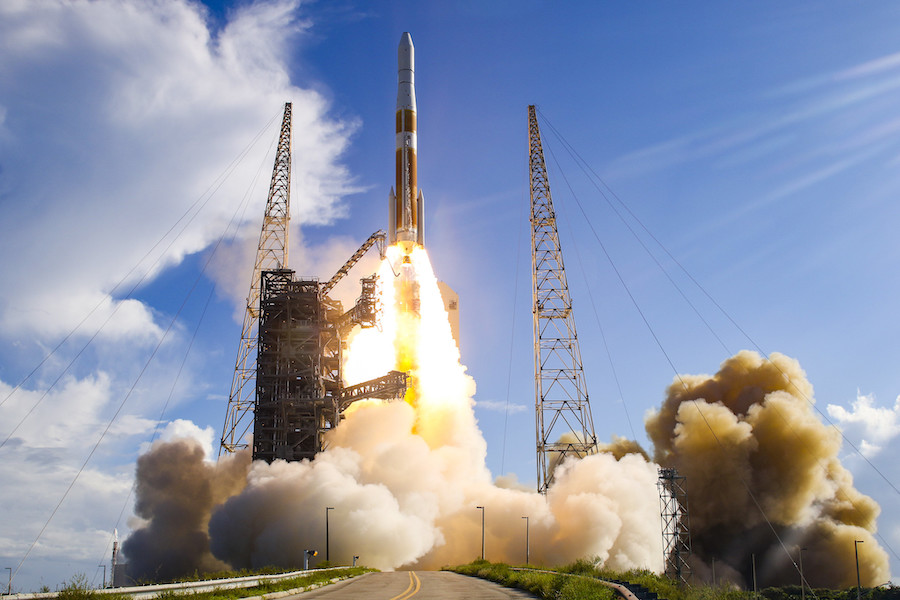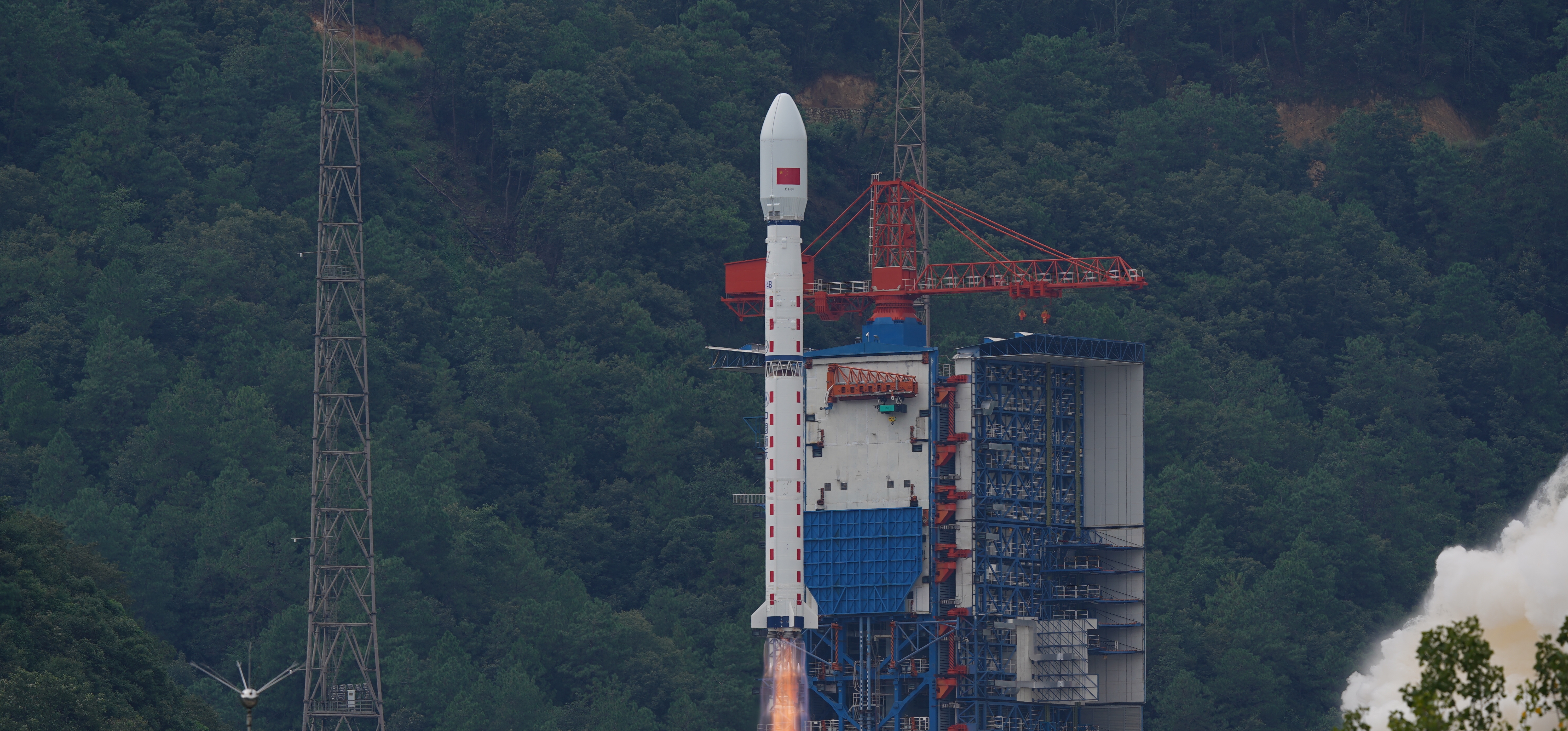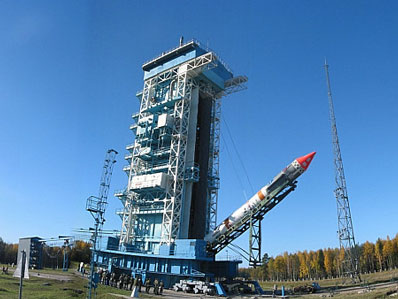Previous Spaceflight Launches
Filter by Agency, Locations or Vehicles
Show All LaunchesProton-K/DM-2M | Astra 1K
Khrunichev State Research and Production Space Center | RussiaBaikonur Cosmodrome, Republic of Kazakhstan
Nov. 25, 2002, 11:04 p.m.
Space Shuttle Endeavour / OV-105 | STS-113
National Aeronautics and Space Administration | United States of AmericaKennedy Space Center, FL, USA
Nov. 24, 2002, 12:49 a.m.
Status: Launch Successful
Mission:
STS-113 was a Space Shuttle mission to the International Space Station (ISS) flown by Space Shuttle Endeavour. During the 14-day mission in late 2002, Endeavour and its crew extended the ISS backbone with the P1 truss and exchanged the Expedition 5 and Expedition 6 crews aboard the station. With Commander Jim Wetherbee and Pilot Paul Lockhart at the controls, Endeavour docked with the station on 25 November 2002 to begin seven days of station assembly, spacewalks and crew and equipment transfers. This was Endeavour’s last flight before entering its Orbiter Major Modification period until 2007, and also the last shuttle mission before the Columbia disaster.
Low Earth OrbitDelta IV M+(4,2) | Eutelsat W5
United Launch Alliance | United States of AmericaCape Canaveral SFS, FL, USA
Nov. 20, 2002, 10:39 p.m.
Soyuz-FG | Soyuz TMA-1
Progress Rocket Space Center | RussiaBaikonur Cosmodrome, Republic of Kazakhstan
Oct. 30, 2002, 3:11 a.m.
Status: Launch Successful
Mission:
Soyuz TMA-1 covers Expedition 5 and 6 by carrying 3 astronauts and cosmonauts to the International Space Station. Russian Commander, cosmonaut Sergei Zalyotin alongside Flight Engineers, Frank De Winne (ESA) & Yury Lonchakov (RSA) will launch aboard the Soyuz spacecraft from the Baikonur Cosmodrome in Kazakhstan and then rendezvous with the station. The landing crew on TMA-1 are Commander Nikolai Budarin (RSA) and Flight Engineers Kenneth Bowersox (ESA), Donald Pettit (NASA). It landed on May 4, 2003, 02:04:25 UTC
Low Earth OrbitLong March 4B | Zi Yuan-2 02 xing
China Aerospace Science and Technology Corporation | ChinaTaiyuan Satellite Launch Center, People's Republic of China
Oct. 27, 2002, 3:17 a.m.
Status: Launch Successful
Mission:
JB-3 2 was nominally a Chinese (PRC) remote sensing satellite, although US intelligence sources indicated it had primarily an intelligence imaging mission. JB-3 2 was the name adopted by the USSPACECOM. Most news reports from China and elsewhere use different names: ZY-2B (acronym for ZiYuan-2B, translated as Resource-2B), and Zhong Guo Zi Yuan Er Hao, translated as China Resource 2. No information was available on the instruments onboard the JB-3 2, but officially it was intended 'for territorial survey, environment monitoring and protection, urban planning, crop yield assessment, disaster monitoring, and space scientific experiments'.
Sun-Synchronous OrbitProton-K/17S40 | Integral
Khrunichev State Research and Production Space Center | RussiaBaikonur Cosmodrome, Republic of Kazakhstan
Oct. 17, 2002, 4:41 a.m.
Soyuz-U-PVB | Foton-M No. 1
Progress Rocket Space Center | RussiaPlesetsk Cosmodrome, Russian Federation
Oct. 15, 2002, 6:20 p.m.
Status: Launch Failure
Mission:
Foton-M No.1 was a mission by the European Space Agency aboard a Russian Soyuz-U rocket that failed to launch successfully. The spacecraft's payload consisted of 44 experiments prepared by the European Space Agency, Fluidpac, BIOPAN-4, Telescience Support Unit, and others. Investigation found that the most likely cause of the failure was debris being ingested into the Blok D hydrogen peroxide pump, cutting off the supply of lubricant to the turbopumps. This was the first failure of an R-7 launch vehicle in the first two minutes of launch since 1988.
Low Earth OrbitSpace Shuttle Atlantis / OV-104 | STS-112
National Aeronautics and Space Administration | United States of AmericaKennedy Space Center, FL, USA
Oct. 7, 2002, 7:45 p.m.
Status: Launch Successful
Mission:
STS-112 (ISS assembly flight 9A) was an 11-day space shuttle mission to the International Space Station (ISS) flown by Space Shuttle Atlantis. Space Shuttle Atlantis was launched on 7 October 2002 at 19:45 UTC from the Kennedy Space Center's launch pad 39B to deliver the 28,000 pound Starboard 1 (S1) truss segment to the Space Station. Ending a 4.5-million-mile journey, Atlantis landed at 15:44 UTC on 18 October 2002 on runway 33 at the Kennedy Space Center's Shuttle Landing Facility.
Low Earth OrbitKosmos-3M | Nadezhda-M
Russian Space Forces | RussiaPlesetsk Cosmodrome, Russian Federation
Sept. 26, 2002, 2:27 p.m.
Soyuz-FG | Progress M1-9
Progress Rocket Space Center | RussiaBaikonur Cosmodrome, Republic of Kazakhstan
Sept. 25, 2002, 4:58 p.m.








